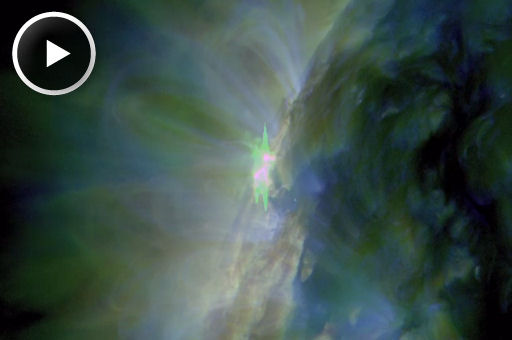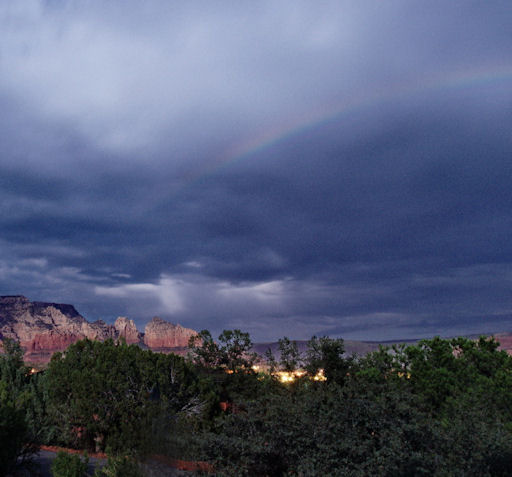Turn your cell phone into a field-tested satellite tracker. Works for Android and iPhone. | | |
SUNDIVING COMET: A comet is diving into the sun today. Just discovered by comet hunters Michal Kusiak of Poland and Sergei Schmalz of Germany, the icy visitor from the outer solar system is expected to brighten to first magnitude before it disintegrates on Sept. 14th. The Solar and Heliospheric Observatory is monitoring the comet's death plunge: finder chart, movie, latest images.
ACTIVE SUNSPOT: New sunspot AR1295 is emerging over the sun's northeastern limb and crackling with solar flares. The strongest so far, a C9.9-category blast, did something remarkable. Click on the arrow to watch an extreme ultraviolet movie from NASA's Solar Dynamics Observatory:

In the movie, the underlying explosion (marked by the flash of extreme UV radiation) hurls material upward. The ejecta crashes into a loop of magnetism above the sunspot, stretching the loop until the material breaks free. Coronagraph images from the STEREO-A spacecraft confirm that a cloud of plasma (a CME) left the scene.
This sunspot will not turn toward Earth for several days. Until then, CMEs leaving AR1295 should continue to miss our planet. Solar flare alerts: text, voice.
HARVEST MOONBOW: Last night's Harvest Moon was so bright, it did something normally reserved for the sun. It made a rainbow:

"I was surprised to see a rainbow at night," says Marsha Adams of Sedona, Arizona, who took the picture nearly 2 hours before sunrise. "The rainbow was apparently caused by the Harvest Moon beaming through the rain clouds."
Indeed, moonlight reflected by raindrops breaks into the colors of a rainbow just like sunlight does. It takes an especially bright Moon, however, to make the phenomenon visible to the human eye. Did anyone else spot a Harvest Moonbow? Submit your images here.
more moonshots: from Stefano De Rosa of Turin (Italy); from Oleg Toumilovitch of Johannesburg, South Africa; from Tamas Abraham of Zsambek, Hungary; from Monika Landy-Gyebnar of Veszprem, Hungary; from David Sylvester of Hamilton, Montana; from Daisuke Tomiyasu of Ashiya city, Japan; from Heiko Ulbricht of Freital, Saxony, Germany; from I. Lembke of Friesland, Netherland;
September 2011 Aurora Gallery
[previous Septembers: 2010, 2009, 2008, 2007, 2006, 2005, 2004]
Potentially Hazardous Asteroids (
PHAs) are space rocks larger than approximately 100m that can come closer to Earth than 0.05 AU. None of the known PHAs is on a collision course with our planet, although astronomers are finding
new ones all the time.
On September 13, 2011 there were 1244 potentially hazardous asteroids.
Notes: LD means "Lunar Distance." 1 LD = 384,401 km, the distance between Earth and the Moon. 1 LD also equals 0.00256 AU. MAG is the visual magnitude of the asteroid on the date of closest approach. | | The official U.S. government space weather bureau |
| | The first place to look for information about sundogs, pillars, rainbows and related phenomena. |
| | Researchers call it a "Hubble for the sun." SDO is the most advanced solar observatory ever. |
| | 3D views of the sun from NASA's Solar and Terrestrial Relations Observatory |
| | Realtime and archival images of the Sun from SOHO. |
| | from the NOAA Space Environment Center |
| | the underlying science of space weather |
| | for out-of-this-world printing and graphics |

